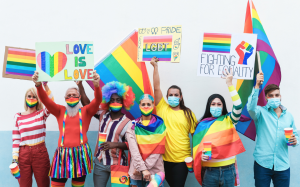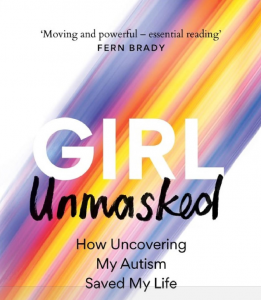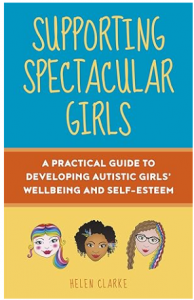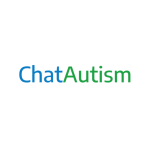Historically, research into autism was mainly focused on the white, heterosexual, cis male population. Research about autism in non-male, non-white, gay and bisexual populations is relatively new by comparison. Although, it seems to be becoming more evident that there are many more autistic people who do not fit into this group.
Therefore, many researchers now believe that there are numerous autistic people in the following categories:
- Women, girls, and non-binary people
- People from a non-white ethnicity
- People in the LGBTQI+ population – such as gay, bisexual and trans people
As research develops, it is becoming apparent that people who fall into the above categories may often present differently from typical white, heterosexual, cis male autistic people.
Any autistic person with a non-typical presentation has the same core characteristics as most autistic men and boys – rooted in neurological differences (differences in ‘brain wiring’). This is what causes the differences in information processing and leads to differences in observable behaviours.
It is these observable behaviours which can seem quite different when comparing one autistic person to another – or even one group of autistic people to another.
It is important to stress that this is a generalisation; it may be that autistic people in different demographic groups tend to have observable behaviours that are less obvious and fundamentally different from that of white, heterosexual cis males – due to differences in culture and socialisation.
Evidence also suggests that autistic people outside of this demographic tend to be more prone to and adept (skilled) at masking – and hiding or internalising their difficulties. Again, to generalise, we might guess that this could be due to them being less privileged and/or more vulnerable, by comparison – and therefore they are more likely to mask as a protective mechanism.
Click here to read our article about masking
When it comes to autism assessments, clinicians must decide if the person meets diagnostic criteria. These are observable behaviours which have been largely based on autistic people who fit the very narrow white, heterosexual cis male population. Assessors tend to use standardised observations and reports of behaviours to determine if a person is considered to meet these criteria and may not always manage to find out about the person’s thinking style that underlies their behaviour. This can mean that an autistic person who is not from this group may behave in ways that do not seem to fit the autism diagnostic criteria.
Even some white, heterosexual, cis males may not be recognised as autistic if they do not conform to the standard stereotype. For instance, any autistic person who happens to be skilled at studying socially expected behaviours and / or who has good spoken language skills can be mistaken for being neurotypical.
Therefore, this can indicate that some autistic individuals who have a non-typical presentation of autism remain undiagnosed – and in some cases even misdiagnosed. This often suggests that they are misunderstood by themselves and by others. Consequently, this group are unlikely to access the most beneficial advice and support – which in turn can lead to poor emotional health and wellbeing, difficulties accessing education and employment, and more likely to have relationship difficulties.
It is known that autistic people have a higher-than-average chance of having mental health difficulties, such as anxiety or depression. They also have a higher-than-average chance of having an eating disorder. In some instances, undiagnosed autistic people who have any of these types of problems might simply be diagnosed with mental health difficulties or eating disorders and the autism is missed. This is known as diagnostic overshadowing.
When autistic people remain undiagnosed and unsupported this is usually due to the bias of an outdated stereotype and the incorrect assumptions which occur as a result.
These assumptions can lead to lack of understanding from a range of otherwise well-meaning people including parents, partners, health professionals, schools and employers.
This is slowly beginning to change as the knowledge around these differences increases and is becoming more widely discussed.
Autistic people who are not white, heterosexual cis males…
- are more likely to have intense interests that are shorter lived and/or on trend and/or socially acceptable.
- might speak with a high-pitched tone or an unusual ‘sing song’ voice
- might stim in a way that is less obvious and more typically socially acceptable – for example, hair twisting.
- are more likely to internalise their autistic type thinking rather than expressing this through their behaviour.
- Are more likely to appear withdrawn rather than aggressive – and are more likely to apologise and try to appease if they are felt to have made an error.
- May seem sociable but can often find this difficult.
- Can come across as shy or at other times may appear to be bossy and overly direct in their communication style, which can seem confusing.
- May often use masking – and may not always do this consciously. The ongoing stress of continually masking can result in anxiety and overwhelm. They may mange to suppress this until they are in their safe spaces where they may then find themselves having meltdowns and / or shutdowns. It is quite common for autistic people who mask to manage this all day at school or work – and then coming home and feeling the need to release pent up stress or energy.
- The types of repetitive behaviours they tend to do may be different compared to typically white, heterosexual cis make autistic people. They may tend to re-do tasks until the results are ‘perfect’ to them. Striving for perfectionism can be viewed by educators or employers as being a ‘textbook’ student or ‘model’ employee.
- They may tend to internalise negative and confusing feelings, leading to detrimental impact on their emotional health and wellbeing – and potentially may lead to diagnostic overshadowing.
- They might have friendships – and are more likely to be part of a small, supportive friendship group, which they are happy to follow.
- They may often demonstrate empathy and compassion to others.
- They may often struggle in larger groups – finding this more stressful and confusing.
- They can find non-verbal social signals confusing.
- They are more likely to have friendship issues when shared interests change.
- They may find it harder than most to cope emotionally when friendships evolve or end.
For further information
A leaflet by the autistic girls network – ‘Keeping it all inside’
A leaflet about girls and autism – ‘Flying under the radar’
Click here to view the National Autistic Society page on women and girls
Click here to view the National Autistic Society information about autism in the BAME community
Click here to read about double discrimination for black, autistic children in schools
Click here to read a blog by a black, bisexual, autistic person
Click here to see Michael Fuller – a black autistic boy who can ‘download’ music into his head
A Podcast by the square peg community
Books
Girl Unmasked: How Uncovering My Autism Saved My Life, – Emily Katy
Supporting spectacular girls: a practical guide to developing autistic girls’ wellbeing and self-esteem, – Helen Clarke






